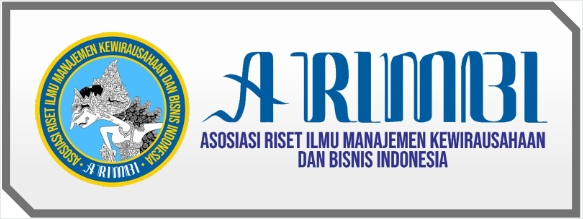Analisis Penerimaan Pengguna terhadap Financial Technology Bareksa Menggunakan Model UTAUT
DOI:
https://doi.org/10.30588/jmp.v12i2.1049Keywords:
Bareksa, Financial Technology, Fintech, User acceptance, UTAUTAbstract
Financial Technology (Fintech) is a set of financial services, tools, platforms, and ecosystems that make financial products and services easier and cheaper to access. One example of the application of Fintech in financial transactions is Bareksa. User acceptance of Bareksa may be influenced by various factors, to find out more about that, this research was carried out. The purpose of this study is to find out how the perception of user acceptance and what factors influence users to use Bareksa. This study uses the Unified Theory of Acceptance and Use of Technology (UTAUT) model as the theoretical basis. The population and sample in this study were Bareksa users and the sampling technique used was quota sampling by obtaining 120 pieces of data. The research method uses Structural Equation Modeling (SEM) with the bootstrap technique because the processed data is not normally distributed. The results of this study are user acceptance of Bareksa is influenced by factors of Business Expectations and Behavioral Intentions, while the factors of Performance Expectations, Social Influences, and Facility Conditions do not affect user acceptance to use Bareksa.References
Amrullah, A., & Priyono, A. (2018). Integrasi Aspek Risiko dalam Model Unified Theory of Acceptance and Usage of Technology untuk Menganalisis Penerimaan Teknologi Go-Ride. MIX: Jurnal Ilmiah Manajemen, 8(1), 33–49. https://doi.org/10.22441/mix.2018.v8i1.003
APJII (2020). Laporan Survei Internet APJII 2019–2020. In Asosiasi Penyelenggara Jasa Internet Indonesia (Vol. 2020). https://apjii.or.id/survei
Asosiasi Fintech Indonesia (2021). ANNUAL Members Survey 2021. Accessed at: https://fintech.id/storage/files/shares/Annual%20Member%20Survey%202019/2022/Spreads%20lowres_AFTECH%20-%20Annual%20Members%20Survey%202021_Bahasa%20update%2028mar%20final.pdf
Awang, Z. (2012). Structural Equation Modeling Using AMOS Graphic. Kelantan: UiTM Press.
Byrne, B. M. (2016). Structural Equation Modeling With AMOS. In Structural Equation Modeling With AMOS (Third edition). Routledge. https://doi.org/10.4324/9781315757421
Cao, Q., & Niu, X. (2019). Integrating context awareness and UTAUT to explain Alipay user adoption. International Journal of Industrial Ergonomics, 69(March 2018), 9–13. https://doi.org/10.1016/j.ergon.2018.09.004
Chairia, C., Sukmadilaga, C., & Yuliafitri, I. (2020). Peran Ekspektasi Kinerja, Ekspektasi Usaha, Pengaruh Sosial, dan Kondisi yang Mendukung terhadap Perilaku Pengguna Itqan Mobile yang Dimediasi oleh Niat Perilaku Menggunakannya. Jurnal Maksipreneur: Manajemen, Koperasi, dan Entrepreneurship, 10(1), 48. https://doi.org/10.30588/jmp.v10i1.655
Chakraborty, S. (2018). Fintech: Evolution or Revolution. Business Analytics Research Lab India, 1. https://www.researchgate.net/profile/Sumit_Chakraborty/publication/328333395_FINTECH_Evolution_or_Revolution/links/5bc6c7e0a6fdcc03c78953b4/FINTECH-Evolution-or-Revolution.pdf
Cheung, G. W., & Lau, R. S. (2008). Testing Mediation and Suppression Effects of Latent Variables. Organizational Research Methods, 11(2), 296–325. https://doi.org/10.1177/1094428107300343
Comrey, A. L., & Lee, H. B. (1992). Interpretation and application of factor analytic results. Comrey AL, Lee HB. A First Course in Factor Analysis, 2.
Dailysocial (2021). Fintech Report 2021 - The Convergence of (Digital) Financial Services. In DS-Research.
Dewi, N. K. L. R. K., & Yadnyana, I. K. (2017). Faktor-Faktor Yang Mempengaruhi Minat dan Perilaku Penggunaan Sistem E-Filing Di Kota Denpasar dengan Model UTAUT. E-Jurnal Akuntansi, 21(3), 2338–2366. https://doi.org/10.24843/EJA.2017.v21.i03.p23
Fornell, C., & Larcker, D. F. (1981). Equation Algebra Unobservable Error : Variables. Journal of Marketing Research, 18(3), 382–388. https://doi.org/10.2307/3150980
Gujarat, D. N., & Porter, D. C. (2009). Basic Econometrics. In Introductory Econometrics: A Practical Approach (Fifth Edit). McGraw-Hill/Irwin.
Guo, H., Huang, X., & Craig, P. (2015). Factors Influencing the User Acceptance of Alipay. Proceedings of the 2015 International Conference on Economy, Management and Education Technology, 29(Icemet), 344–347. https://doi.org/10.2991/icemet-15.2015.73
Hair, J. F. J., Black, W. C., Babin, B. J., Anderson, R. E., Black, W. C., & Anderson, R. E. (2019). Multivariate Data Analysis (EIGHTH EDI). Cengage Learning EMEA WCN:
Hasif, M., & Ahmad, K. (2019). Factors Affecting the Acceptance of Financial Technology among Asnaf for the Distribution of Zakat in Selangor- A Study Using UTAUT. Journal of Islamic Finance (Special Issue), 2117, 35–46.
Johan, S. (2020). Users’ Acceptance of Financial Technology in an Emerging Market (An Empirical Study in Indonesia). Jurnal Ekonomi dan Bisnis, 23(1), 173–188. https://doi.org/10.24914/jeb.v23i1.2813
Mohamad, S. A., & Kassim, S. (2018). Examining the Relationship between UTAUT Construct, Technology Awareness, Financial Cost and E-Payment Adoption among Microfinance Clients in Malaysia. Proceedings of the 1st Aceh Global Conference (AGC 2018), 292, 351–357. https://doi.org/10.2991/agc-18.2019.56
Nabila, M., Purwandari, B., Nazief, B. A. A., Chalid, D. A., Wibowo, S. S., & Solichah, I. (2018). Financial Technology Acceptance Factors of Electronic Wallet and Digital Cash in Indonesia. 2018 International Conference on Information Technology Systems and Innovation (ICITSI), 284–289. https://doi.org/10.1109/ICITSI.2018.8696091
Ningsih, S., & Dukalang, H. H. (2019). Penerapan Metode Suksesif Interval pada Analsis Regresi Linier Berganda. Jambura Journal of Mathematics, 1(1), 43–53. https://doi.org/10.34312/jjom.v1i1.1742
Oliveira, T., Thomas, M., Baptista, G., & Campos, F. (2016). Mobile payment: Understanding the determinants of customer adoption and intention to recommend the technology. Computers in Human Behavior, 61(2016), 404–414. https://doi.org/10.1016/j.chb.2016.03.030
Prasetyo, D. Y. (2017). Penerapan Metode UTAUT (Unified Theory of Acceptance and Use of Technology) Dalam Memahami Penerimaan dan Penggunaan Website KKN LPPM UNISI. Jurnal SISTEMASI, 6(2), 26–34. https://doi.org/10.32520/stmsi.v6i2.50
Puschmann, T. (2017). Fintech. Business and Information Systems Engineering, 59(1), 69–76. https://doi.org/10.1007/s12599-017-0464-6
Regina, T., Kurniasari, F., & Utomo, P. (2021). UTAUT Approach Application to Analyze the Determinants of Fintech Market Aggregator User Satisfaction. Proceedings of the First International Conference of Economics, Business & Entrepreneurship, ICEBE 2020, 1st October 2020, Tangerang, Indonesia, 2–9. https://doi.org/10.4108/eai.1-10-2020.2304934
Salampasis, D., & Mention, A. L. (2018). FinTech: Harnessing Innovation for Financial Inclusion. In Handbook of Blockchain, Digital Finance, and Inclusion (Vol. 2, pp. 451–461). Elsevier Inc. https://doi.org/10.1016/B978-0-12-812282-2.00018-8
Shaikh, I. M., Qureshi, M. A., Noordin, K., Shaikh, J. M., Khan, A., & Shahbaz, M. S. (2020). Acceptance of Islamic Financial Technology (FinTech) Banking Services by Malaysian Users: An Extension of Technology Acceptance Model. Foresight, 22(3), 367–383. https://doi.org/10.1108/FS-12-2019-0105
Sugiyono, S. (2013). Metode Penelitian Kuantitatif, Kualitatif dan R&D. Bandung: CV Alfabeta.
Venkatesh, V., Smith, R. H., Morris, M. G., Davis, G. B., Davis, F. D., & Walton, S. M. (2003). User Acceptance of Information Technology: Toward A Unified View. https://doi.org/10.2307/30036540
Zavolokina, L., Dolata, M., & Schwabe, G. (2016). FinTech-What’s in a Name? https://doi.org/10.5167/uzh-126806
Downloads
Additional Files
Published
How to Cite
Issue
Section
License
Authors who publish with Jurnal Maksipreneur agree to the following terms:
Authors retain copyright and grant the Jurnal Maksipreneur right of first publication with the work simultaneously licensed under a Creative Commons Attribution 4.0 International License that allows others to share (copy and redistribute the material in any medium or format) and adapt (remix, transform, and build upon the material) the work for any purpose, even commercially with an acknowledgment of the work's authorship and initial publication in Jurnal Maksipreneur.
Authors are able to enter into separate, additional contractual arrangements for the non-exclusive distribution of the journal's published version of the work (e.g., post it to an institutional repository or publish it in a book), with an acknowledgment of its initial publication in Jurnal Maksipreneur. Authors are permitted and encouraged to post their work online (e.g., in institutional repositories or on their website) prior to and during the submission process, as it can lead to productive exchanges, as well as earlier and greater citation of published work (See The Effect of Open Access).























